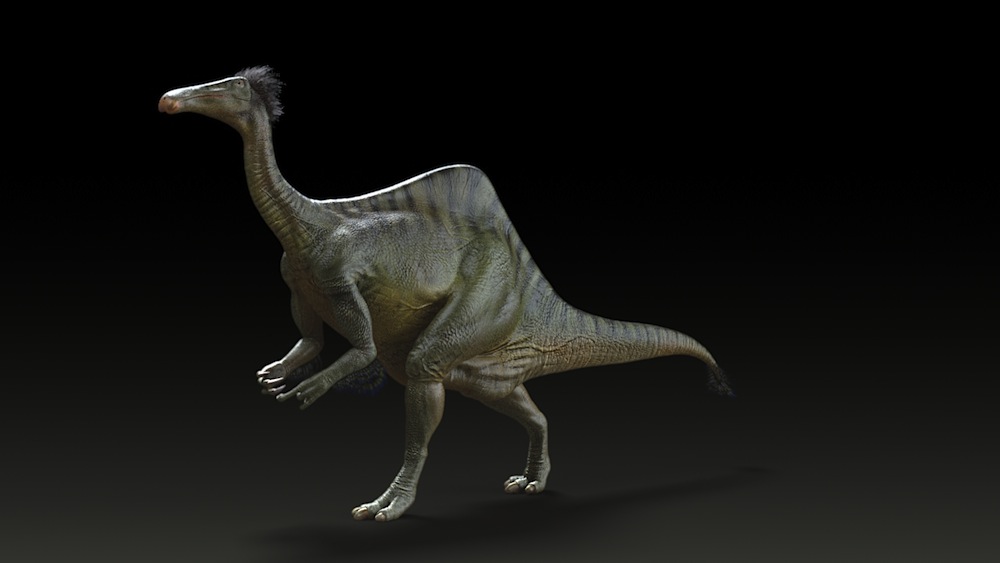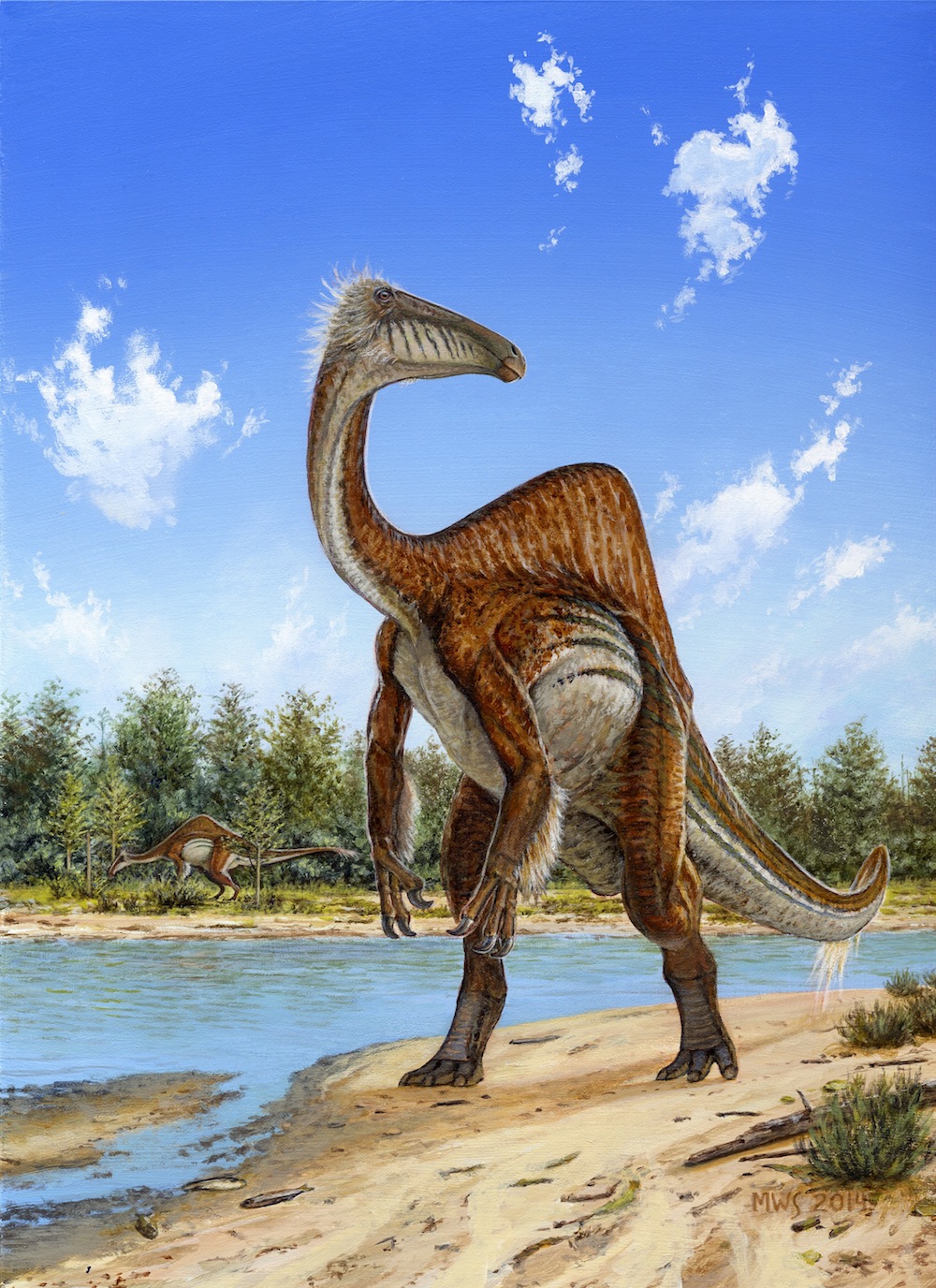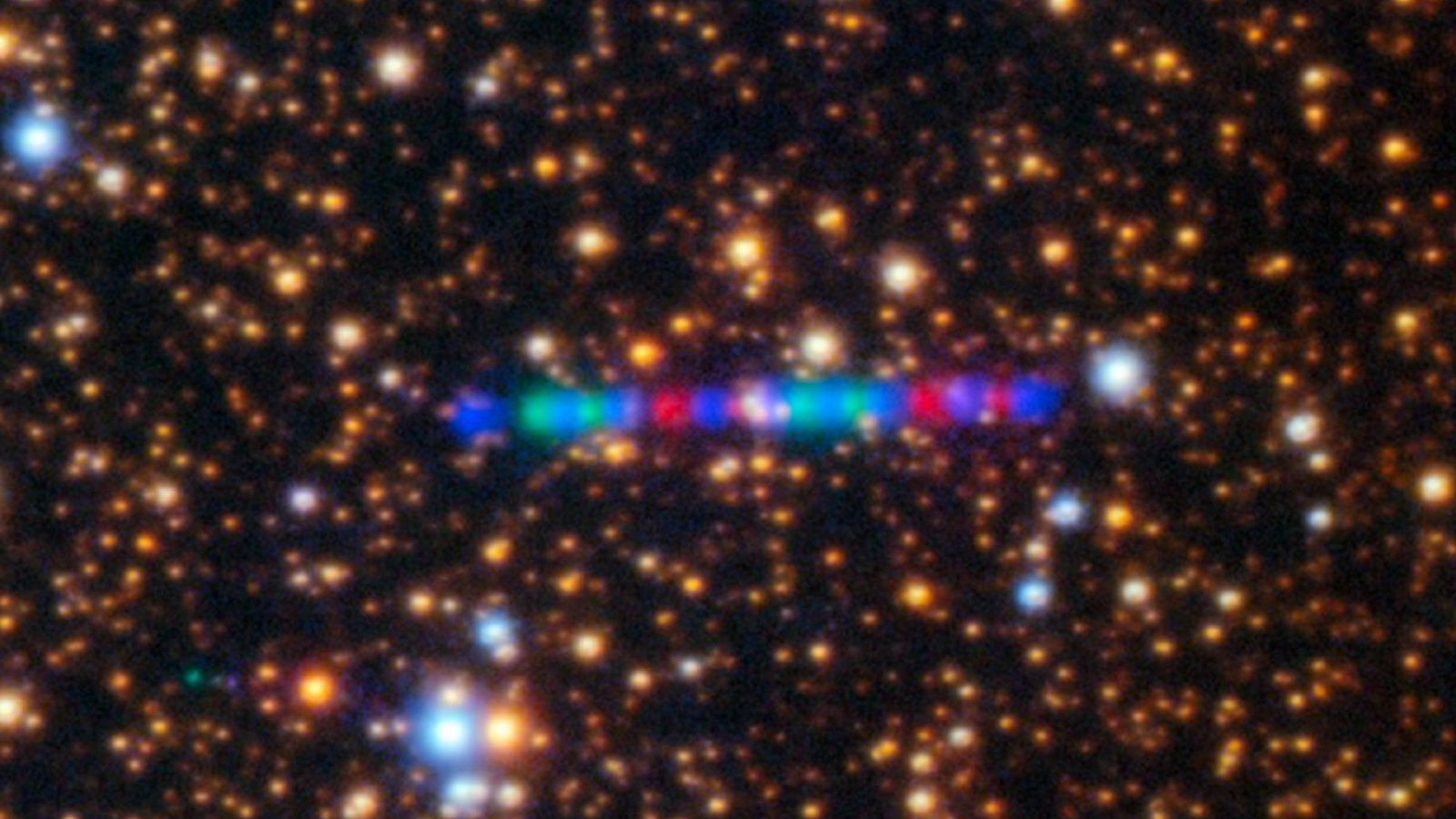
About 70 million years ago, a humpbacked, duck-billed dinosaur with monstrous front limbs and "mudding hooves" tramped through rivers hunting fish.
Though the odd-looking creature, named Deinocheirus mirificus, was discovered nearly 50 years ago, almost nothing was known about the mysterious creature until two new skeletons were unearthed in Mongolia recently.
"Deinocheirus was a peculiar humpbacked form with a duckbill-like skull," that could grow to the size of a T. rex, said study lead author Yuong-Nam Lee, a researcher at the Korea Institute of Geoscience and Mineral Resources in South Korea. [See a Video of the Wacky Humpbacked Dinosaur Walking]
By analyzing the newly discovered skeletons, which were described today (Oct. 22) in the journal Nature, Lee and his colleagues were finally able to place the bizarre creature on a dinosaur family tree.
Mystery hands
In 1965, paleontologists unearthed the giant, 7.8-foot-long (2.4 meters) forelimbs of a terrifying dinosaur in Mongolia's Gobi Desert. Because only the limbs and a few rib bones were discovered, scientists could say almost nothing about the mysterious creature, which they dubbed Deinocheirus mirificus, or "unusual horrible hand."
After discovering the quarry, the team shipped the remaining bones to South Korea and assembled them. They soon identified the creature as the elusive Deinocheirus mirificus, minus the head and feet (which were likely stolen by the poachers.) With the first fossil skeleton assembled, the researchers looked at their own collections and realized they had another D. mirificus partial skeleton sitting on the shelves, Lee said.
Get the world’s most fascinating discoveries delivered straight to your inbox.
Then, in 2011, one of the study co-authors discovered that a private European collector had a Deinocheirus skull, left hand and feet. The European collector had purchased the fossils from a Japanese buyer, who in turn got them from someone in Mongolia — probably the person who had taken them from the original quarry site. Like jigsaw puzzle pieces, the European fossil fragments fit perfectly with the bones that Lee and his colleagues collected in Mongolia, creating an almost complete picture of the animal.
Odd body
The odd creature looked like something out of a "Star Wars" movie. It had a toothless, duck-billed snout, a humped back and stumpy, square-toed hooves that would have kept the dinosaur from sinking into the mud as it tramped through muddy river bottoms. It also sported a pygostyle, or a fused tailbone that supported fans of feathers, which D. mirificus may have waggled in a showy display, Lee told Live Science in an email.
The dinosaur was also very large: One of the creatures was 36 feet (11 m) long and weighed about 6.4 tons, Lee said.
In addition to the fossils, the team also found about 1,400 gastroliths, or gizzard stones, that the toothless dinosaurs might have used in their guts to grind up plants. Combined with fish parts found in the dinosaur's stomach area, the two suggest the animal was an omnivore.
With an almost-complete skeleton, the team was able to reconstruct the Deinocheirus family tree. The beaked creature is a member of the ornithomimosaurs, a group of dinosaurs that look superficially like ostriches, but are actually theropods, the researchers wrote in the paper. (Theropods were a group of predominantly predatory dinosaurs that included Tyrannosaurus rex.)
D. mirificusdidn't look much like its ornithomimosaur cousins, however. Most of those creatures had "small skulls with large eyes and slender bodies with relatively long hind limbs," which allowed them to run, Lee said. In contrast, Deinocheirus would have had a more plodding gait.
Follow Tia Ghose on Twitter and Google+. Follow LiveScience @livescience, Facebook & Google+. Originally published on Live Science.

Tia is the managing editor and was previously a senior writer for Live Science. Her work has appeared in Scientific American, Wired.com and other outlets. She holds a master's degree in bioengineering from the University of Washington, a graduate certificate in science writing from UC Santa Cruz and a bachelor's degree in mechanical engineering from the University of Texas at Austin. Tia was part of a team at the Milwaukee Journal Sentinel that published the Empty Cradles series on preterm births, which won multiple awards, including the 2012 Casey Medal for Meritorious Journalism.

